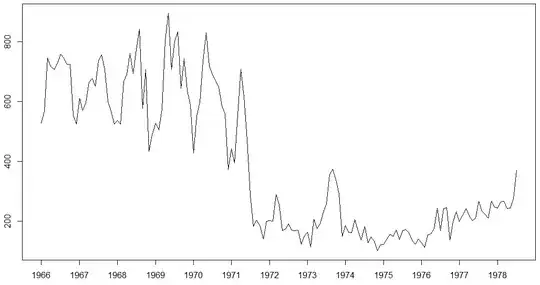In addition to what @whuber has recommended, I would refer you to https://www.otexts.org/fpp/6/1 which explains why you would choose additive vs. multiplicative decomposition.
In specifically looking at your data, because the seasonality varies, i.e., seasonality at the beginning is large and as it seasonality is almost not present in the later years, this would suggest a multiplicative decomposition. According to the text referenced above, an alternative would be to do an appropriate transformation and apply additive decomposition.
There is a level shift in the data some time around mod 1972 which also needs to be treated when decomposing.
There is another decomposition based method called unobserved components model which takes most of the guess work out of decomposition and provides you with some good statistics to make sound decision such as stochastic vs. deterministic trends/seasonality etc.
Hope this helps.
